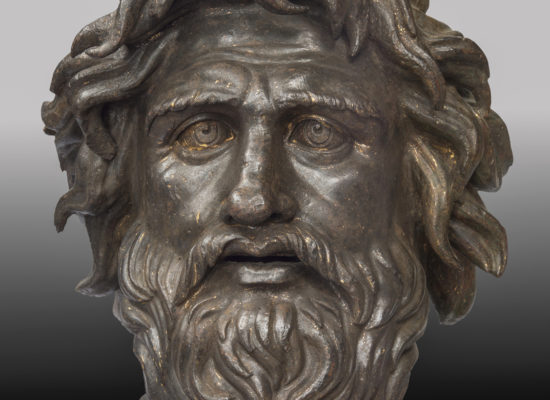New York’s Museum of Biblical Art (MoBiA) has received an impressive gift for its 10th birthday: an exhibition of early Renaissance masterpieces, including major works by Donatello that have never been seen outside Florence. “Sculpture in the Age of Donatello: Renaissance Masterpieces from Florence Cathedral,” which opened February 20, also features Luca della Robbia, Filippo Brunelleschi, and Nanni di Banco, among other artists.
The 25 works are on on loan from the Museo dell’Opera del Duomo, which has only agreed to part with such artistic treasures because it is currently closed for renovations (see Renaissance Masterpieces by Donatello to Make Rare New York Appearance). When it reopens in October, the museum will have dramatically expanded, and the whole piazza surrounding the cathedral will have been spruced up (see A Facelift Will Brighten Up Florence’s Piazza del Duomo). The artwork will most likely never leave again, making the MoBiA exhibition a once-in-a-lifetime opportunity to see these pieces on American soil.
Among the showstoppers in the show are Donatello’s over-six-foot-tall The Evangelist John, which has never before left Florence’s central square, let alone Europe (see At the Museum of Biblical Art, Donatello’s “Saint John” Shows What Art Looked Like Before Museums). As it weighs over two tons, its easy to understand why—and profoundly difficult to imagine how it could have managed such a long journey here to New York.
Indeed, when exhibition co-curator Daniel Zolli, a Harvard-based Donatello scholar, was first informed of the museum’s plans, his excitement was tempered with a healthy dose of skepticism. “I thought ‘You must be lying!'” he told artnet News.
Somehow, the monumental task was accomplished. This is an even more amazing feat when one considers that the Italian government had to give its approval for the works to leave the country. Despite the threat of bureaucratic red tape, Museo dell’Opera director and exhibition co-curator Timothy Verdon assured artnet News that “to my amazement, everything went absolutely smoothly”—although John had to be partially unpacked in the street order to make it through the front door at MoBiA.
Although New York’s larger institutions, such as the Metropolitan Museum of Art, weren’t able to host the show on such short notice, Verdon is ultimately happy with the exhibition venue. The Duomo and its artworks were “constructed by the state as a reflection of its faith and piety,” he explained. Showing these pieces today at MoBiA gives the Museo dell’Opera “the chance to present these works in the perspective of their original meaning, and overcome reticence toward discussing the religious meaning [of Renaissance art].”
“Sculpture in the Age of Donatello: Renaissance Masterpieces From Florence Cathedral” will be on view at the Museum of Biblical Art, 1865 Broadway (at 61st Street), New York City, through June 14, 2015.
